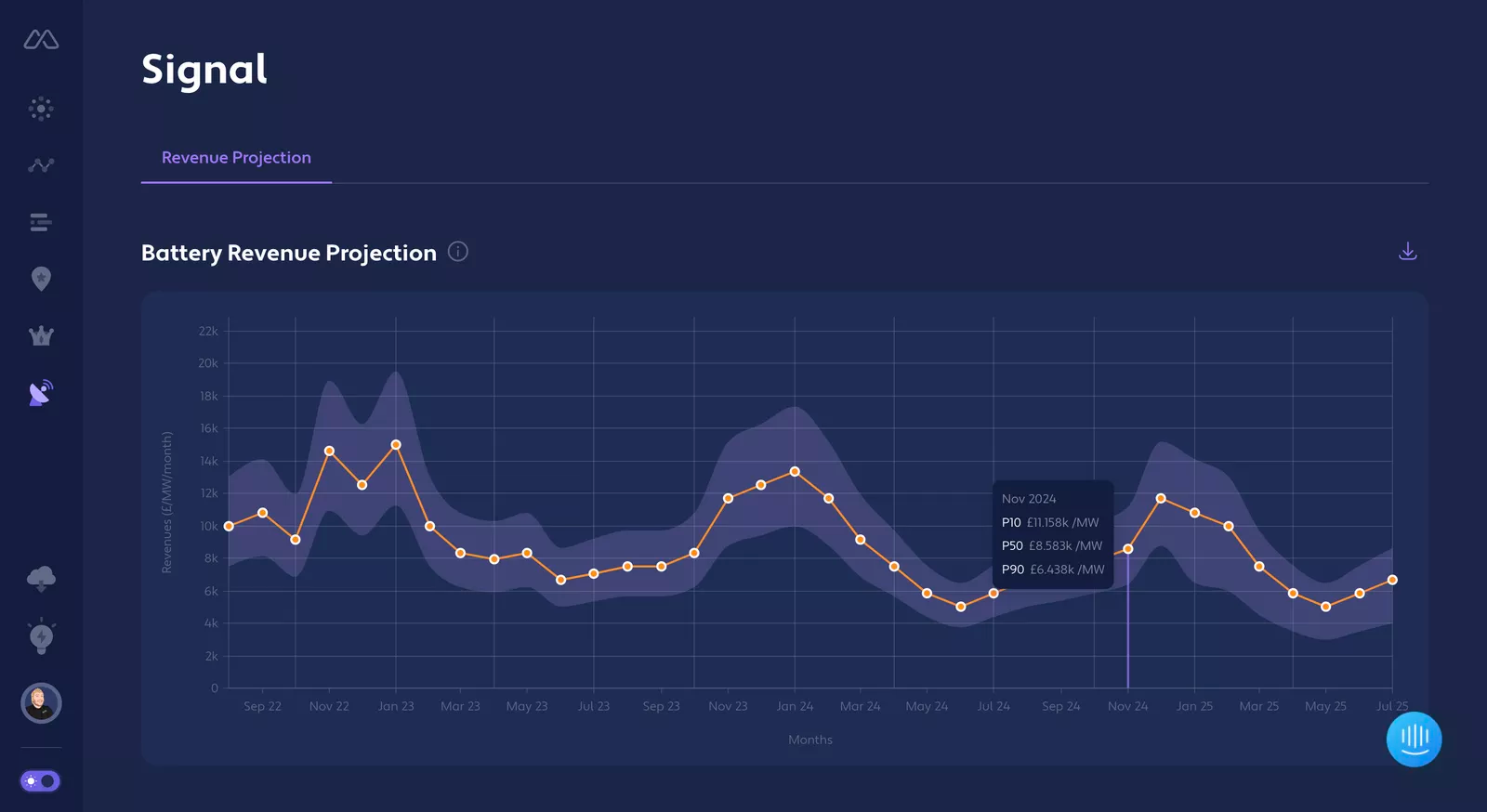Changelog
Follow up on the latest improvements and updates.
RSS
We move to using forward power curves rather than forward gas curves in the forecast. We create a hourly forward curve using a daily shape on monthly futures contracts, based on time series analysis and a view of extreme pricing (both low and high) based on forecast volatility in the future.
Using the minimum and maximum daily values of price from this hourly forecast, we estimate the wholesale trading value for batteries of 1 and 2 hours in duration.
We also updated the build-out curve and update inputs to the wind, demand and dispatchable plant models, ensuring the machine learning model is robust to new data inputs.
We have added a new methodology to integrate forward-looking BM revenues into the forecast. Using projected revenues from buying back wholesale positions in the BM, and taking into account system changes within the control room which should increase skip rates (so more batteries have accepted bids and offers from September 2023), we estimate how much money a battery will earn.
Several updates or improvements in the October update to Signal:
- Updated all of the input data so it uses data to 26th September 2022, which previously was up to mid-July 2022, including a new gas curve.
- Improved the smoothing of the gas curve, which is delivered in monthly intervals.
- Use the NG ESO shorter-term forecast for the dispatchable plant data, for the first two weeks of the curve. The remainder of the curve is using the 2 week - 3 year forecast (as before).
- Reduced the FFR requirements so that they begin stepping down from January 2022. This is in line with the latest comms from National Grid.
To account for 2-hour systems we estimate the spread of the second most expensive hour in day, as compared to the first most expensive hour. Historically (2018-2022) the average value of this is 80%.
Thus we scale the 1-hour merchant revenues by 1.8 to get revenues for a 2-hour system.
We now apply an 85% charge efficiency (assuming a 100% discharge efficiency) to our calculation of merchant revenues. This means we charge for 1/0.85=1.17 hours at the lowest price and discharge for 1 hour at the maximum price in a day.
To account for the current fleet duration of 1.1h, we scale our 1 hour merchant revenue case by 1.08. This is to account for the second hour of spread being 80% of the first hour of spread, and that there is an additional 0.1 hours of capacity. 0.1*80% = 0.08.
In addition to providing our revenue forecasts in £/MW/month, we have added the option to view them in £/MW/hr and £/MW/year. These additional units are visible in the Signal data file.
We’re super excited to announce the launch of Signal! This is our three-year forward view of battery energy storage revenues in Great Britain.
Since we launched three years ago, we've been focused on enabling Asset Success. This has helped our users to do some amazing things - build new batteries, launch new startups, lower the cost of financing. Over 80% of battery energy storage asset owners and operators in GB use the Modo Leaderboard. It lets you track your assets and benchmark them against everybody else’s.
But almost everything we’ve done until this point has been telling you how things have been. Basically, we've been focused on the past.
Signal takes all we've learned about assets and markets over the last three years of Modo, and uses that data to look forward across the next three years.
How does Signal work?
We’ve built Signal from scratch.
Signal is always learning, evolving and improving. When the market changes, you’ll see the impact straight away. So if National Grid ESO changes its frequency response requirement forecast, or we see a step-change in wholesale prices, or new markets for battery energy storage systems emerge - you’ll be able to see how it will impact your revenues.

We know that to get the most out of Signal, you need to understand how it works. That’s why we’re making it completely transparent. Over the next couple of weeks, we’ll be publishing our entire methodology - so, if you're using Signal in your business model, you can explain how it works, including all the details.
Signal is now available as an add-on for all of our paying users, starting from £2,499 a month.